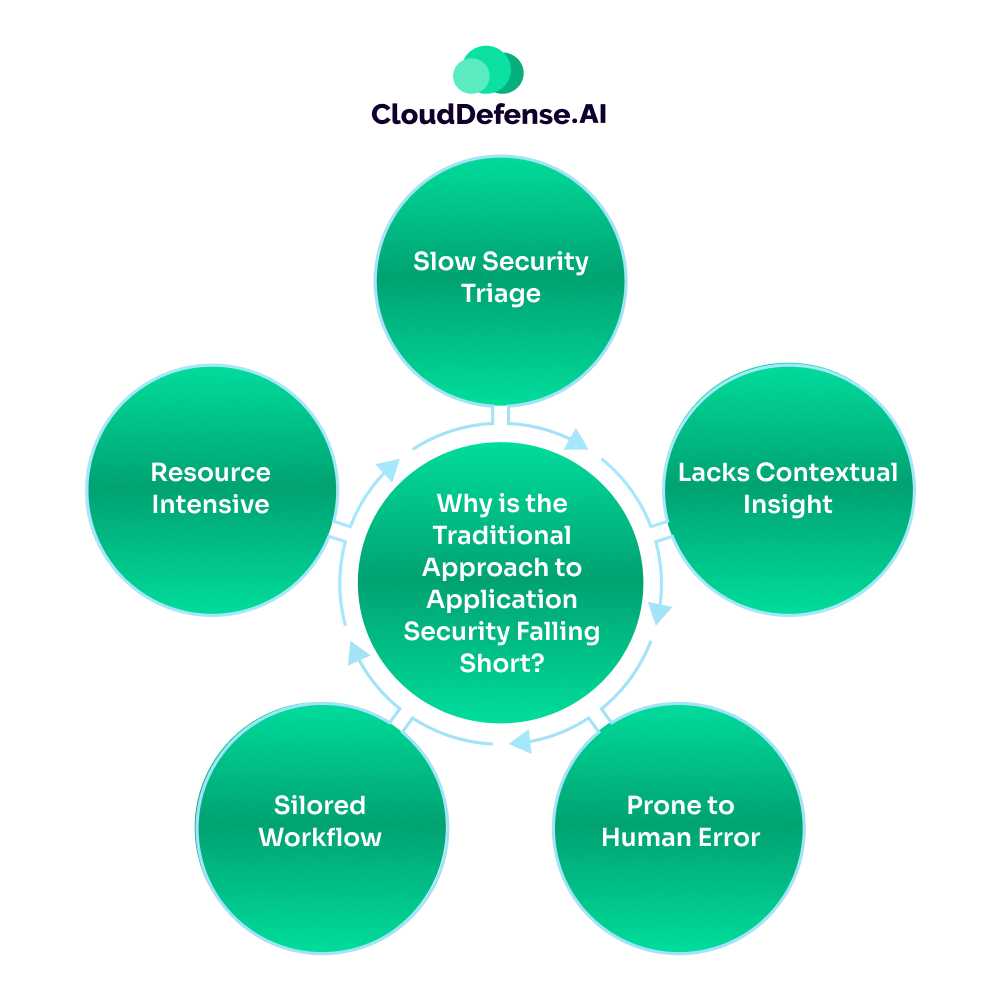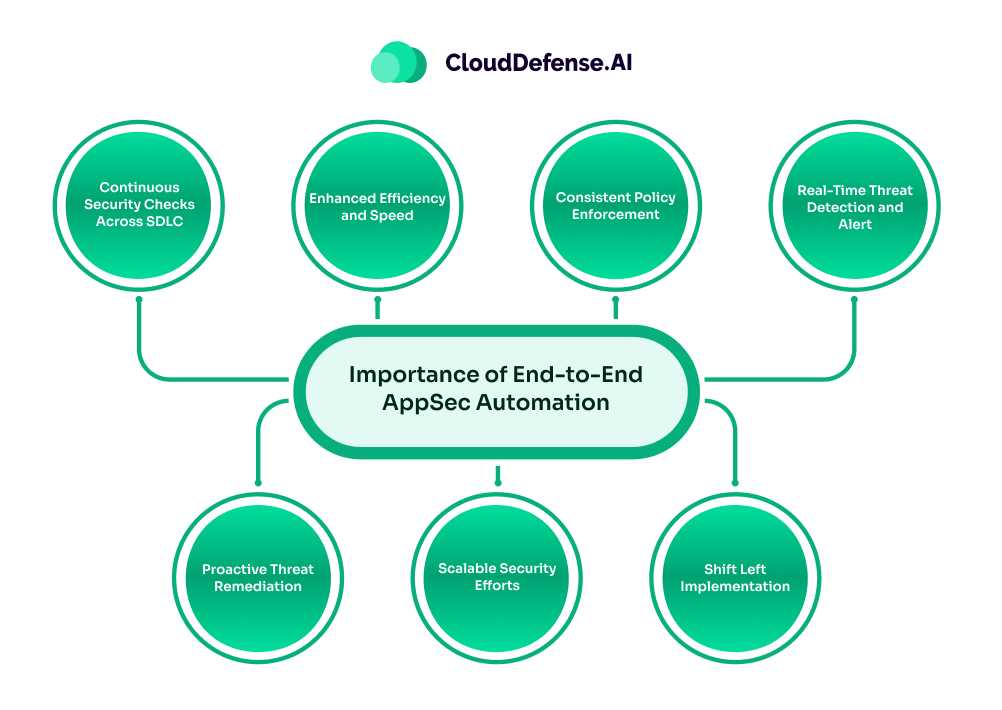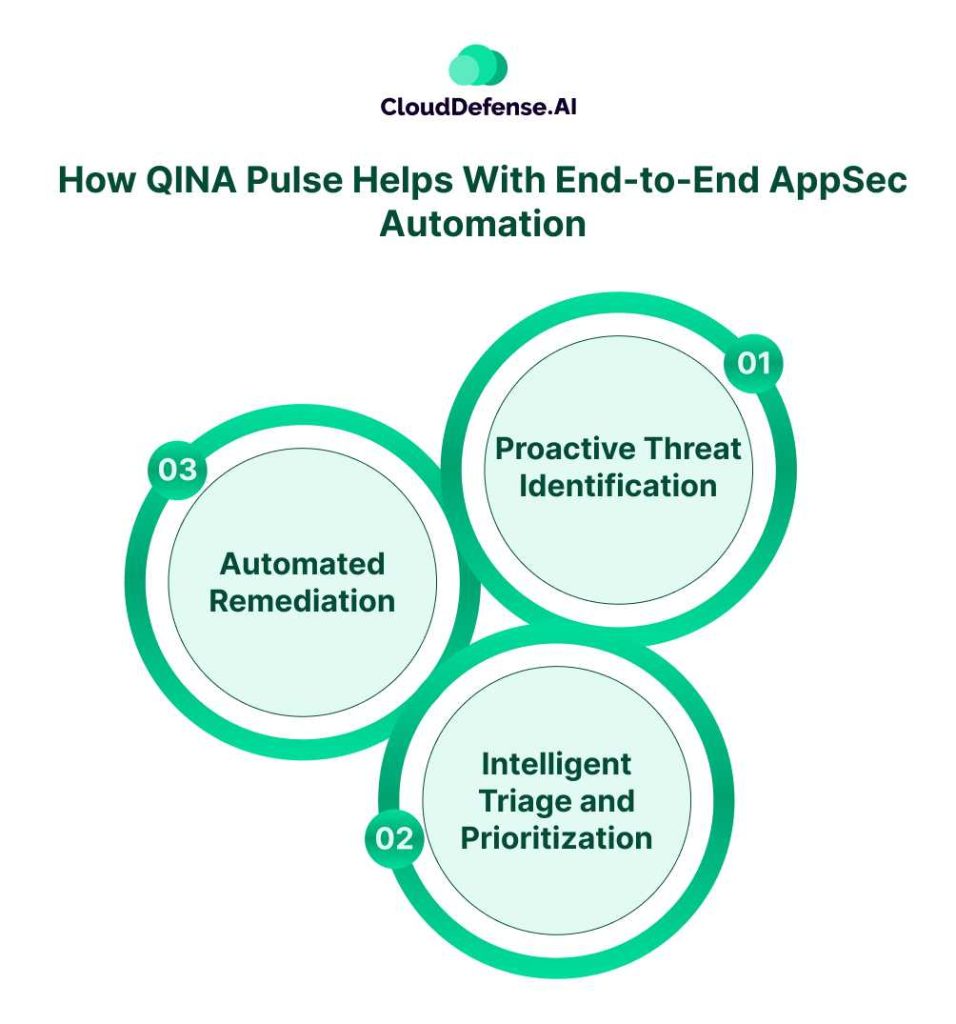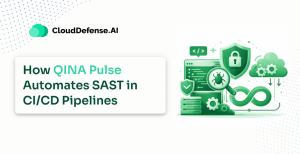Every organization is adopting new development approaches to deliver its application as quickly as possible in the market. However, many of them still use traditional approaches for their application security, burdening analysts with high alert, inconsistency in policy deployment, and a huge workload. It also creates a gap between identifying security threats and remediating them, leading to possible risk.
The increasing complexity with application security necessitates the adoption of application security automation. QINA Pulse serves as a perfect tool to help you close the gap and deliver a proactive approach through complete automation.
Pulse is an advanced AI-powered security assistant that delivers end-to-end AppSec automation through continuous identification and remediation of vulnerabilities. In this guide, we will explore how QINA Pulse can help you with end-to-end AppSec automation and bolster security guardrails.
Why is the Traditional Approach to Application Security Falling Short?

Nowadays, organizations are always pushing for high-speed software development while maintaining an optimum security posture. However, a manual AppSec approach doesn’t cut it in today’s cybersecurity scenario. The challenges it introduces are:
- Slow Security Triage: The Traditional approach involves using tools that perform automated triage without context. As a result, it leads to a high volume of false positives, which ultimately delays the incident response process.
- Lacks Contextual Insight: All the vulnerability reports generated by old AppSec tools lack contextual insight. Even the security alerts don’t offer any remediation guidance for the developers. It forces the developers to investigate the security alert before automating the remediation action.
- Resource Intensive: Standard security workflow automation mostly involves automating repetitive security tasks like generating tickets or creating reports. However, not only are they time-consuming, but they are also resource-intensive.
- Silored Workflow: Traditional tools don’t always offer a centralized dashboard for facilitating seamless communication between teams. Security and development teams used to rely on tickets for communication, causing inefficiency.
- Prone to Human Error: Another major issue with the traditional approach is that it introduces a lot of human error. A lot of security tasks require human involvement, making them prone to human error and potentially expanding the attack surface.
End-to-End AppSec Automation and Its Importance
End-to-end appsec automation is a process to automate application security checks and management throughout the SDLC. It leverages advanced automation tools and technologies to secure applications by automating tasks like vulnerability scanning, remediation action, policy deployment, and many more.
It helps you make a shift-left approach application by integrating security processes from the beginning of the SDLC and proactively remediating vulnerabilities as they arise.
Importance of End-to-End AppSec Automation

Nowadays, modern application development is fast and involves complex architecture with many third-party dependencies. Traditional AppSec approach and remediation effort simply don’t cut it, as they offer complete automation and lead to security bottlenecks. This is where end-to-end AppSec automation comes in handy as it offers:
- Continuous Security Checks Across SDLC: A key factor that makes complete End-to-End AppSec Automation important is that it introduces continuous security checks at every stage. It helps in automating the SAST, DAST, SCA, and many other security tools at different stages to identify vulnerabilities before they can make an impact.
- Enhanced Efficiency and Speed: With end-to-end AppSec automation, you can automate most of the tasks, including time-consuming security processes like alert triage. It improves the overall threat detection efficiency by a large margin while maintaining development speed.
- Consistent Policy Enforcement: A complete automation makes sure all your organizational security policies and configurations are consistently implemented at every stage of SDLC. It helps in maintaining a consistent security guardrail and adherence to industry regulatory requirements.
- Real-Time Threat Detection and Alert: When you opt for complete automation, it helps in detecting and responding to vulnerabilities in real time. It automates the process that continuously looks for vulnerabilities and initiates alerts when any threat is detected.
- Proactive Threat Remediation: Many organisations opt for end-to-end appsec automation because it helps with vulnerability remediation automation. It can implement fixes for known vulnerabilities and suggest possible remediation actions for complex threats.
- Scalable Security Efforts: With time, your organization will grow, causing a high flow of threat data. The complete security workflow automation will help to tackle a large volume of threat data and code changes without significantly increasing the workload.
- Shift Left Implementation: As security checks are introduced in every stage of the development process and automated policy enforcement, it helps in shift left implementation. It is suitable to remediate vulnerabilities before they have a costly impact.
How QINA Pulse Helps With End-to-End AppSec Automation

QINA Pulse serves as a powerful security tool that can help your organization with streamlined end-to-end AppSec automation.
It is an AI security assistant that integrates with all your security tools and frameworks for End-to-End AppSec Automation through a natural language interface. Here is how QINA helps with complete application security automation in every stage:
Stage 1: Proactive Threat Identification
QINA Pulse provides a centralized and natural-language interface through which analysts can initiate all security checks in application development. It is integrated with SAST, DAST, SCA, IaC Scanning, and IAST to identify vulnerabilities in any segment of the application development.
With a simple command, analysts can even opt for continuous scanning that will also help in identifying vulnerabilities early in the development stage. It is continuously learning new threat patterns and signatures, enabling it to identify novel threats and advanced threats with subtle patterns. Besides, it also utilizes logs, analytics, and data streams to continuously monitor for malicious patterns that can lead to security threats.
Stage 2: Intelligent Triage and Prioritization
Threat detection generates a large volume of security findings, which are difficult to triage manually. Pulse automates the triage process, where it scans all the findings, analyzes them, and identifies patterns to cut through the noise. In addition, it also performs intelligent prioritisation of all the alerts.
Pulse assesses all the alerts based on impact, exploitability, and your organization’s security policies and business goals. It enables the team to focus on the most impactful threat and filter out all the false positives. It also correlates findings from other tools and sources to provide a contextual insight into all the alerts.
Stage 3: Automated Remediation
QINA Pulse also helps in end-to-end appsec automation through smart vulnerability remediation automation. Your team just needs to make a simple command, and it will provide the best remediation guidance possible for a specific threat. In some cases, Pulse can help with code snippets that can help your developers eliminate the vulnerability. As it integrates directly into the IDEs, the suggestions are directly received in the development environment.
Pulse performs real-time data aggregation that simplifies complex threat data into actionable intelligence. It helps analysts with contextual insights in threat data and to decide the course of the remediation effort. It can also perform automated remediation action when commanded and will immediately fix the vulnerability.
Jira or Slack alerts regarding vulnerability can trigger the automated remediation process. The AI is continuously learning from remediation actions and refining the model to offer more accurate suggestions.
Besides helping with end-to-end appsec automation from detection to remediation, Pulse also helps with other security workflow automation:
Validation and Verification
The complete End-to-End AppSec Automation doesn’t end at remediation, as QINA Pulse also assists in validating and verifying the remediation actions. It enables the analysts to verify that all the vulnerabilities have been fixed and that it hasn’t introduced any new security threats in the process. It helps in retriggering security scans so that your team can confirm that all the vulnerabilities have been eliminated.
Compliance Monitoring and Reporting
Almost every organization in the world has to adhere to regulatory requirements like GDPR, PCI-DSS, HIPAA, and many more. However, maintaining compliance with continuous monitoring and steady reporting is a time-consuming process. It simplifies it by enabling the analyst to generate compliance reports and gap analysis within 30 seconds.
Pulse automates compliance monitoring processes that provide analysis with real-time aggregated data, which provides simplified insights for audit trails. As a result, it helps your organization to stay compliant with all the regulatory requirements while avoiding any unnecessary compliance fines.
Bottom Line
End-to-end AppSec automation has become a necessity for modern organizations to deploy secure applications at speed in today’s complex cybersecurity environment. QINA Pulse integration, along with other security tools, empowers your team for a complete security workflow automation. From detection to remediation, along with compliance monitoring, QINA Pulse assists your team in every stage of automation.
It provides an intelligent AppSec automation that helps you take a more proactive and efficient approach to your AppSec strategy. Through complete automation in SDLC, it significantly reduces the workload, improves security posture, and maintains proactive guardrails against evolving threats. It brings the agility, efficiency, and intelligence in the automation that is needed to build and deploy secure applications at speed. Find out more as how QINA Pulse helps with complete application security automation by booking a free live demo at CloudDefense.AI.







